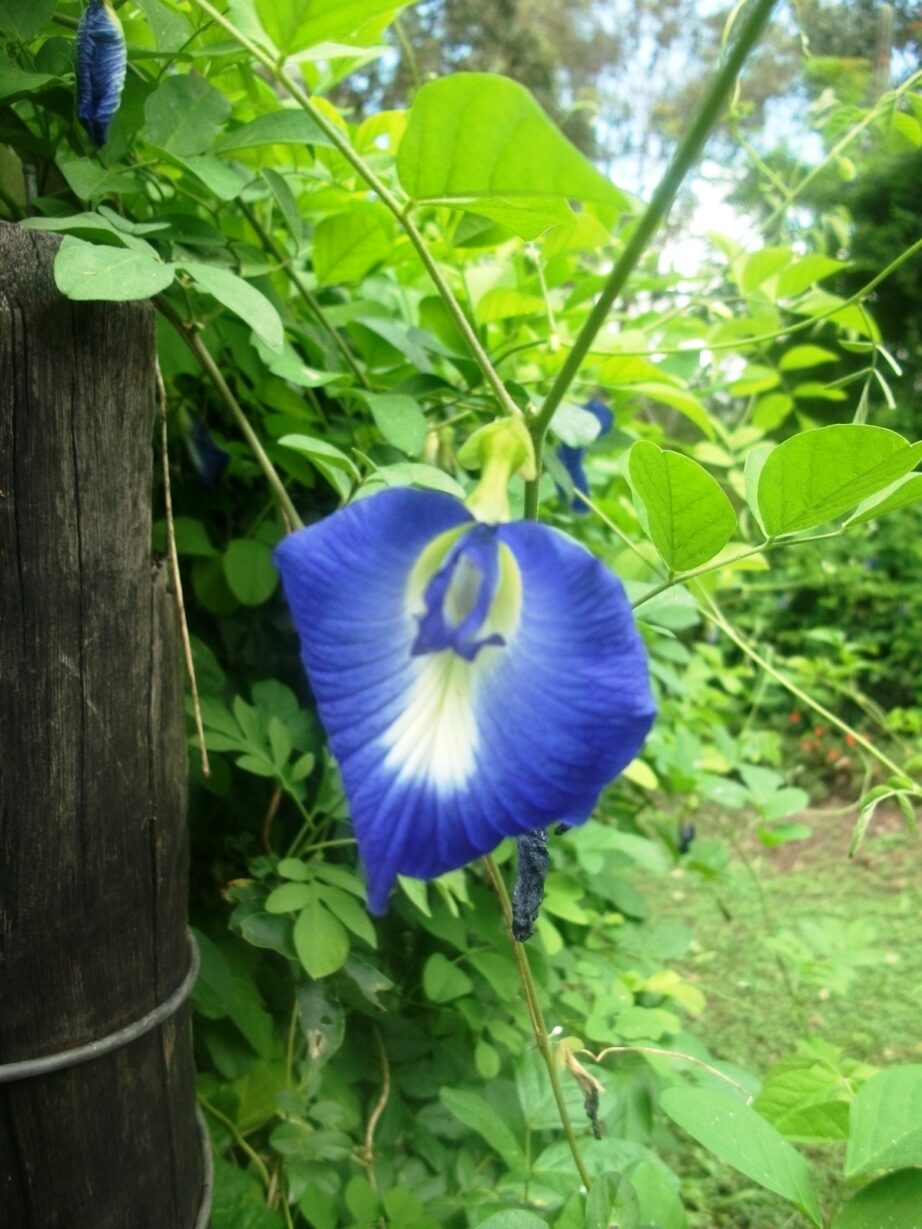
Butterfly Pea Vine Seeds: Rich Royal Blue, Clitoria ternatea, Bunga telang, Edible/Tea and Decorative, Butterfly Garden/Host Plant . [Seeds for sale x $4 per 5 seeds] Add $4 pack/post Australia wide to your order..Dried blue flowers 5g pack $15 + pack/post $5

** I also have dried flowers for sale to make your exotic drink. Interested..?? Any questions or if buying, contact me HERE

Clitoria ternatea, commonly known as Asian pigeonwings,[1] bluebellvine, blue pea, butterfly pea, cordofan pea and Darwin pea,[2] is a plant species belonging to the family Fabaceae.

In India, it is revered as a holy flower, used in daily puja rituals. The flowers of this vine were imagined to have the shape of human female genitals, hence the Latin name of the genus “Clitoria”, from “clitoris”.

Distribution
This plant is native to equatorial Asia, including locations the Indian sub-continent and Southeast Asia but has also been introduced to Africa, Australia and America.


The fruits are 5–7 cm (2.0–2.8 in) long, flat pods with six to ten seeds in each pod. They are edible when tender.

It is grown as an ornamental plant and as a revegetation species (e.g., in coal mines in Australia), requiring little care when cultivated.

As a legume, its roots form a symbiotic association with soil bacteria known as rhizobia, which transform atmospheric N2 into a plant-usable form (a process called nitrogen fixing), therefore, this plant is also used to improve soil quality through the decomposition of nitrogen rich plant material. Clitoria ternatea

Uses-Food
In Southeast Asia, the flower is used as a natural food colouring to colour glutinous rice. In Kelantan, in the north-east of peninsular Malaysia, it is an important ingredient in nasi kerabu, giving it its characteristic bluish colour. In Burmese and Thai cuisines, the flowers are also dipped in batter and fried.

Butterfly pea flower tea is made from the ternatea flowers and dried lemongrass and changes color depending on what is added to the liquid, with lemon juice turning it purple.[3] In Thailand and Vietnam, this butterfly blue pea flower tea is commonly mixed with honey and lemon to increase acidity and turn the beverage a pink-purple color, to produce for a drink usually served after dinner, or as a refreshment at hotels and spas.[4] The drink is a typical local drink like chamomile tea is in other parts of the world.[4] The tea is found in both hot and cold varieties [5]

The flowers have more recently been used in a color-changing gin. Blue in the bottle, it turns pink when mixed with a carbonated mixer such as tonic water due to the change in pH.[6] As organic colours are not permanent, this type of gin is recommended to be stored in a dark place to maintain the effect.

Traditional medicine
In traditional Ayurvedic medicine, it is ascribed various qualities including memory enhancing, nootropic, antistress, anxiolytic, antidepressant, anticonvulsant, tranquilizing, and sedative properties.

In traditional Chinese medicine, the plant has been ascribed properties affecting female libido o due to its similar appearance to the female reproductive organ. Henry Sapiecha

Any questions or if buying, contact me HERE


